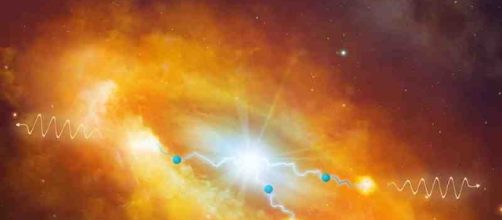Tuesday, March 28, 2017 -- NASA plans to launch a balloon-shaped telescope to measure cosmic material of the Milky Way. Christopher Walker, a professor of astronomy at the UA's Steward Observatory, is the head of the project. He says the data will help scientists determine the life cycle of interstellar gas in our Milky Way. Experts want to know more about how stars are formed.
The Milky Way galaxy
The Milky Way Galaxy is our home in the universe. It is a fairly typical barred spiral with four primary arms in its disk, at least one spur and a newly discovered outer arm.
The galactic center, which is located about 26,000 light-years from Earth, has a giant black hole (called Sagittarius A*) and dozens of stars. The Milky Way began forming around 13 billion years ago. It is a part of over 60 galaxies called Local Group. NASA is interested in measuring cosmic material of the Milky Way to know more about its stars. Walker says the Andromeda Galaxy is part of the group, Local Group. The balloon-shaped observatory will measure emissions from the interstellar medium - the cosmic material found between stars.
The future of this research
The Milky Way does not sit still but is constantly rotating. All planets and the Sun travel at an average speed of 515,000 miles per hour.
Even at this rapid rate, our solar system will take about 220 million years to go all the way from Milky Way. In contrast, the balloon-shaped telescope will take about 100 years to move all the way around Milky Way. Scientists will soon find out the thickness of dust and gas within the galaxy.
In about four billion years, the Milky Way will collide with its nearest neighbor, the Andromeda Galaxy.
Both are rushing towards each other at about 70 miles per second. When they collide, they will provide a fresh influx of material that will kick off many stars. Christopher aims to collect data about the Milky Way and the Andromeda Galaxy.
"If we want to understand where we came from, we have to understand the interstellar medium," Walker says.
The telescope is outfitted with carbon, oxygen, and nitrogen emission line detectors. It will provide sufficient information about the complexities of the interstellar medium. It will also map out large sections of our Milky Way and the nearby galaxy known as Large Magellanic Cloud.

